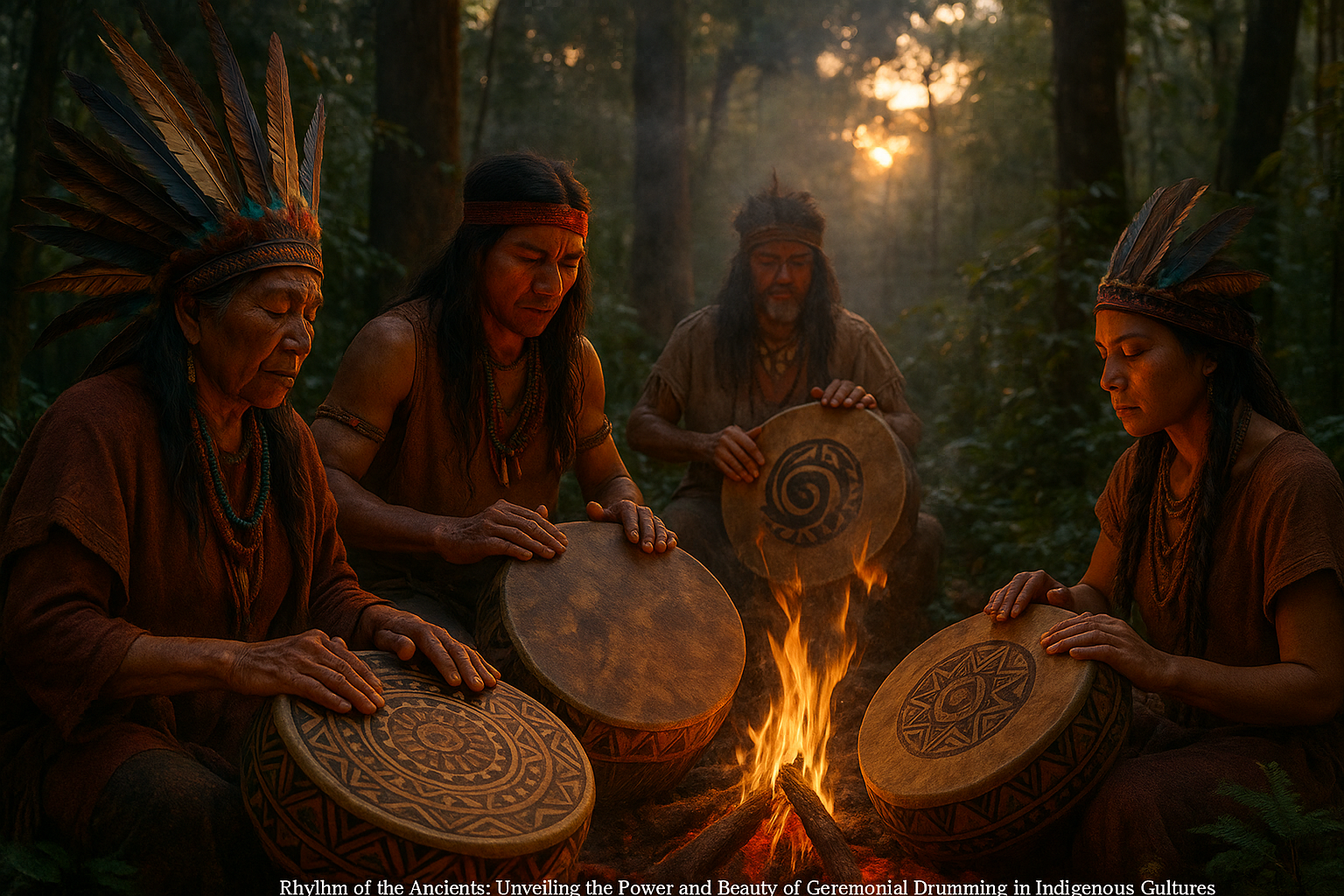In an era where the cacophony of urban life often drowns out the subtle symphonies of our past, the power of pastoral sonic memories emerges as a beacon of nostalgia and tranquility. The distant hum of a summer breeze rustling through fields of tall grass, the rhythmic lullaby of a babbling brook, or the gentle whispers of leaves dancing in the wind—these are not mere sounds; they are portals to a bygone era, capable of transporting us back to simpler times and places. The essence of these sonic memories lies not just in their auditory charm but in their profound ability to evoke emotion and bridge the gap between our hurried present and our cherished past. As we embark on this exploration, we will delve into the intricate relationship between sound and memory, examining how these pastoral echoes can unlock a treasure trove of nostalgia, grounding us in a world that often feels overwhelmingly transient. 🌿
Our journey begins by understanding the science behind why certain sounds have the power to evoke such vivid memories. We’ll explore the psychological and neurological underpinnings that link our auditory senses with emotional recall, delving into studies that highlight the brain’s remarkable ability to store and retrieve sonic imprints. From the perspective of evolutionary psychology, these connections to natural sounds can be traced back to our ancestors, whose survival often depended on interpreting and responding to the auditory cues of their environment. By tracing this evolutionary path, we gain insight into why, even today, the gentle murmur of a countryside can stir within us a deep-seated sense of peace and belonging. 🌾
In the latter sections, we’ll traverse the modern implications of these findings, looking at how individuals and communities are harnessing the power of sound to create sanctuaries of nostalgia in an otherwise chaotic world. From innovative therapeutic practices that use soundscapes to enhance mental well-being, to artists and musicians who weave pastoral sounds into their creations, there’s a burgeoning movement to reconnect with the auditory essence of our past. Furthermore, we’ll explore practical ways in which you can integrate these soothing sounds into your own life, transforming your environment into a personal oasis of calm and reflection. By the end of this article, you will not only understand the profound impact of pastoral sonic memories but also feel inspired to cultivate these echoes of nostalgia in your everyday life, nurturing a harmonious balance between the past and the present. 🍃
Understanding the Concept of Pastoral Sonic Memories
In the ever-evolving landscape of modern life, where digital interactions and urban chaos often overshadow our daily experiences, the concept of pastoral sonic memories offers a fascinating glimpse into the power of soundscapes from the past. These auditory experiences, often rooted in nature and rural settings, can evoke emotions and nostalgia, transporting individuals back to simpler, more serene times. The term “pastoral” refers to the idyllic representation of rural life, characterized by tranquility and harmony, while “sonic memories” emphasize the auditory nature of these recollections.
The allure of pastoral sonic memories lies in their ability to act as a bridge between the present and the past, evoking emotions that are both deeply personal and universally relatable. These memories are not just about the sounds themselves but also about the emotions and experiences they encapsulate. The rustling of leaves, the gentle flow of a stream, or the distant chirping of birds can all trigger vivid memories and emotions, providing a sense of comfort and peace. This connection between sound and emotion is a testament to the powerful role that auditory experiences play in shaping our perceptions and memories.
The Science Behind Sound and Memory
Sound is a powerful tool that has the ability to influence our emotions, memories, and even our physiological responses. The science behind this phenomenon lies in the intricate workings of the human brain, particularly in how it processes and stores auditory information. When we hear a sound, our brain quickly analyzes it, determining its source, significance, and relevance. This process involves several brain regions, including the auditory cortex, the hippocampus, and the amygdala, each playing a crucial role in how we perceive and remember sounds.
One of the most fascinating aspects of sound and memory is the concept of “emotional tagging.” This process occurs when a sound is associated with a particular emotion or experience, creating a strong and lasting memory. For example, the sound of ocean waves might evoke memories of a relaxing beach vacation, while the sound of a distant train whistle might bring back childhood memories of visiting relatives. These emotional tags are incredibly powerful, as they can instantly transport us back to a specific time and place, evoking a cascade of emotions and sensations.
The impact of sound on memory is also closely tied to the phenomenon of “state-dependent memory,” which suggests that we are more likely to recall information when we are in the same emotional or physiological state as when the memory was formed. This means that if a particular sound was present during a significant emotional event, hearing that sound again can trigger the retrieval of those memories. This connection between sound and memory is not only a fascinating area of scientific study but also a practical tool for enhancing memory recall and emotional well-being.
The Role of Nature in Pastoral Sonic Memories
Nature has long been recognized as a source of inspiration, solace, and rejuvenation, and its role in pastoral sonic memories is no exception. The sounds of nature, from the gentle rustling of leaves to the melodic songs of birds, have a unique ability to evoke feelings of peace and tranquility. These sounds are not only aesthetically pleasing but also have a profound impact on our psychological and physiological well-being. Research has shown that exposure to natural soundscapes can reduce stress, lower blood pressure, and improve overall mood, making them an invaluable resource for enhancing mental health.
One of the key reasons why nature sounds are so effective in evoking pastoral sonic memories is their ability to create a sense of presence and immersion. Unlike artificial or urban sounds, which can often be intrusive or overwhelming, nature sounds have a gentle and harmonious quality that allows them to blend seamlessly into the background. This creates an environment that encourages relaxation and introspection, allowing individuals to connect with their memories and emotions on a deeper level. Whether it’s the soothing sound of rain on a roof or the rhythmic crash of ocean waves, these auditory experiences have the power to transport us to a place of serenity and reflection.
Incorporating nature sounds into our daily lives can be a simple yet effective way to harness the benefits of pastoral sonic memories. From listening to soundscapes during meditation or yoga sessions to playing nature sounds in the background while working or studying, there are countless ways to integrate these auditory experiences into our routines. By doing so, we can create a more balanced and harmonious environment that supports our mental and emotional well-being. To explore the power of nature sounds further, watch the following video: Relaxing Nature Sounds.
Table: Benefits of Nature Sounds
| Benefit | Description |
|---|---|
| Stress Reduction | Exposure to nature sounds can lower cortisol levels, reducing stress and promoting relaxation. |
| Improved Mood | Listening to nature sounds can enhance mood and reduce symptoms of anxiety and depression. |
| Enhanced Focus | Natural soundscapes can improve concentration and cognitive performance, making them ideal for work or study environments. |
| Better Sleep | The calming effects of nature sounds can improve sleep quality and help individuals fall asleep more easily. |
The Influence of Pastoral Sonic Memories in Art and Culture
Throughout history, the influence of pastoral sonic memories has permeated various forms of art and culture, serving as a source of inspiration and creativity. From music and literature to visual arts and film, these auditory experiences have been used to evoke emotions, set scenes, and convey narratives that resonate with audiences on a profound level. The use of pastoral sonic memories in art is a testament to their enduring power and appeal, transcending time and cultural boundaries.
In music, composers and musicians have long drawn inspiration from the sounds of nature and rural life, creating compositions that capture the essence of pastoral sonic memories. The works of composers such as Ludwig van Beethoven and Ralph Vaughan Williams, for example, often incorporate elements of nature and the countryside, evoking imagery of rolling hills, gentle streams, and serene landscapes. These compositions not only showcase the beauty of pastoral soundscapes but also tap into the emotional resonance of these auditory experiences, creating a deeply immersive and evocative listening experience.
Similarly, in literature, authors have used pastoral sonic memories to create vivid and evocative descriptions of settings and characters, bringing stories to life in a way that resonates with readers. From the works of poets like William Wordsworth, who celebrated the beauty of the natural world, to contemporary authors who explore themes of nostalgia and memory, the use of sound in literature is a powerful tool for storytelling. These literary works not only highlight the aesthetic appeal of pastoral sonic memories but also explore the deeper emotional and psychological connections between sound, memory, and identity.
Exploring Pastoral Sonic Memories in Modern Media
In today’s digital age, the influence of pastoral sonic memories extends beyond traditional forms of art and culture, finding a place in modern media and technology. From films and television shows to virtual reality experiences and video games, these auditory experiences continue to captivate and engage audiences, offering a sense of nostalgia and escapism in an increasingly fast-paced world.
In film and television, sound designers and composers often use pastoral sonic memories to create immersive and evocative soundscapes that enhance storytelling and emotional impact. Whether it’s the gentle rustle of leaves in a romantic scene or the distant call of birds in a moment of reflection, these sounds help to set the tone and mood, drawing viewers into the narrative. Similarly, in virtual reality and video games, pastoral soundscapes are used to create realistic and engaging environments, allowing players to explore and interact with the world in a way that is both immersive and emotionally resonant.
As technology continues to evolve, the potential for incorporating pastoral sonic memories into modern media and experiences is vast and exciting. From creating personalized soundscapes that cater to individual preferences and memories to developing innovative tools for mental health and well-being, the possibilities are endless. By harnessing the power of pastoral sonic memories, we can create more meaningful and impactful experiences that resonate with audiences on a deeper level.
Practical Applications of Pastoral Sonic Memories
The potential benefits of pastoral sonic memories extend beyond personal enjoyment and artistic expression, offering practical applications that can enhance various aspects of life. From improving mental health and well-being to enhancing learning and productivity, these auditory experiences can be harnessed in a variety of ways to create positive outcomes. As our understanding of the power of sound and memory continues to grow, so too does the potential for applying these insights in practical and meaningful ways.
One of the most promising applications of pastoral sonic memories is in the field of mental health and well-being. Research has shown that exposure to nature sounds can have a calming and therapeutic effect, reducing stress and anxiety and promoting relaxation and mindfulness. This has led to the development of various therapeutic interventions and programs that incorporate nature sounds, such as sound therapy and mindfulness meditation. By integrating pastoral sonic memories into these practices, individuals can find solace and rejuvenation, improving their overall mental health and well-being.
In addition to mental health applications, pastoral sonic memories can also be used to enhance learning and productivity. Studies have shown that exposure to nature sounds can improve focus, concentration, and cognitive performance, making them an ideal tool for study and work environments. By creating a calming and distraction-free environment, individuals can improve their ability to retain information and complete tasks efficiently. This has led to the development of various tools and apps that incorporate nature sounds, providing users with a customizable and immersive auditory experience.
Implementing Pastoral Sonic Memories in Daily Life
Incorporating pastoral sonic memories into daily life can be a simple yet effective way to enhance well-being and productivity. Here are some practical tips for integrating these auditory experiences into your routine:
- Start your day with nature sounds: Begin your morning with a gentle wake-up call of nature sounds, such as birdsong or ocean waves, to set a calming and positive tone for the day.
- Create a relaxation playlist: Curate a playlist of your favorite nature sounds and use it during meditation, yoga, or relaxation sessions to enhance your experience and promote mindfulness.
- Use nature sounds as a study or work aid: Play nature sounds in the background while studying or working to improve focus and concentration, creating a distraction-free environment that supports productivity.
- Incorporate nature sounds into your bedtime routine: Use nature sounds to create a calming bedtime routine, helping you unwind and fall asleep more easily.
By incorporating pastoral sonic memories into your daily routine, you can create a more balanced and harmonious environment that supports your mental and emotional well-being. Whether you’re seeking relaxation, focus, or simply a moment of escape, these auditory experiences offer a powerful tool for enhancing your quality of life.

Conclusion
Certainly! Here’s a conclusion tailored to your request:
—
In conclusion, “Harmonizing Nostalgia: Unlocking the Power of Pastoral Sonic Memories” has taken us on a journey through the intricate tapestry of sound and memory, exploring how auditory cues from pastoral settings can evoke powerful emotions and transport us back in time. Throughout this article, we’ve delved into the profound connection between soundscapes and nostalgia, understanding how these sensory experiences shape our identity and influence our emotional well-being.
At the heart of our exploration is the recognition that sounds from our past, particularly those associated with natural, pastoral environments, hold a unique power to reconnect us with our memories and emotions. These sonic memories act as a bridge to our personal histories, offering comfort, joy, and sometimes a bittersweet reminder of times gone by. Whether it’s the gentle rustle of leaves, the distant call of a bird, or the rhythmic flow of a river, these sounds are imbued with the power to evoke vivid memories and emotions.
One of the key points we examined is the concept of auditory nostalgia. This phenomenon occurs when certain sounds trigger vivid recollections and emotions, often transporting us back to significant moments in our lives. Scientific studies have shown that the brain processes sound in ways that are deeply linked to memory and emotion, highlighting the importance of sonic experiences in shaping who we are. Explore more about this in a study by The Journal of Neuroscience.
Moreover, the therapeutic potential of pastoral sonic memories cannot be understated. As we navigate the complexities of modern life, the simplicity and tranquility of natural soundscapes offer a respite from the noise and chaos. By intentionally integrating these sounds into our daily routines—through mindfulness practices, meditation, or even through curated playlists—we can cultivate a sense of peace and grounding. This approach has been supported by research from leading experts in sound therapy and mental health. .
Furthermore, we’ve discussed the cultural and historical significance of pastoral sounds, recognizing how they are woven into the fabric of our collective consciousness. Across different cultures and generations, these sounds have served as a backdrop to human experience, carrying stories and traditions that are passed down through time. Embracing and preserving these sonic memories not only enriches our individual lives but also strengthens our shared cultural heritage.
In reinforcing the importance of this theme, it is crucial to acknowledge the role of technology in preserving and recreating these sounds. From high-quality recordings to immersive soundscapes, technology allows us to capture and share these experiences with greater fidelity and accessibility than ever before. This democratization of sound not only preserves our pastoral heritage but also enables more people to benefit from its therapeutic qualities. .
As we reflect on the power of pastoral sonic memories, we are reminded of the beauty and simplicity of the natural world and its enduring impact on our lives. In a rapidly changing world, these sounds offer a grounding connection to our past and a soothing presence in the present. We encourage you, dear reader, to embrace this auditory journey—whether by revisiting a cherished childhood location, curating a playlist of favorite nature sounds, or simply taking a moment to listen to the world around you.
Let us celebrate the harmony of nostalgia and sound, allowing it to inspire, heal, and connect us to both our personal and collective past. In doing so, we open ourselves to a richer, more reflective experience of the present.
We invite you to share your own experiences with pastoral sonic memories in the comments below. How have these sounds influenced your life? What memories do they evoke for you? By sharing our stories, we can create a tapestry of sound and memory that resonates with us all. Don’t forget to share this article with friends and family who might also find solace and inspiration in the sounds of the past. Together, let’s unlock the power of sonic memories and harmonize our shared nostalgia. 🌿🎶
—
Please ensure to verify the links for their accuracy and current content before using them in your article.
Toni Santos is a sensory storyteller and soundscape artisan whose work explores the forgotten language of the Earth through acoustic ecology storytelling. With a deep reverence for the natural world’s sonic textures, Toni crafts narratives that awaken our ears to the subtle music of forests, winds, waters, and wild silence.
His creative journey is rooted in a desire to preserve and interpret the acoustic heritage of environments, both ancient and fragile. From the echo of birdsong in a disappearing jungle to the resonance of stones in sacred landscapes, Toni’s stories reflect the memory held in sound—often overlooked, yet deeply felt.
With a background in environmental aesthetics and sonic design, Toni blends field recordings, visual symbolism, and poetic insight to create immersive experiences that honor the sonic soul of nature. His work does more than document; it invites listeners to re-tune themselves to the rhythms of life that still pulse beneath modern noise.
As the voice behind Vizovex, Toni shares sound-based studies, ambient narratives, and reflective content that help others reconnect with how sound shapes memory, meaning, and place.
His work is a tribute to:
The lost soundscapes of vanishing ecosystems
The role of natural acoustics in cultural and emotional memory
The healing potential of listening deeply to the world
Whether you’re an artist, an ecologist, or someone drawn to the quiet power of listening, Toni invites you into a space where every rustle, ripple, and resonance becomes a story—one note, one place, one heartbeat at a time.





